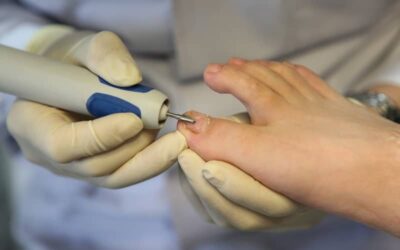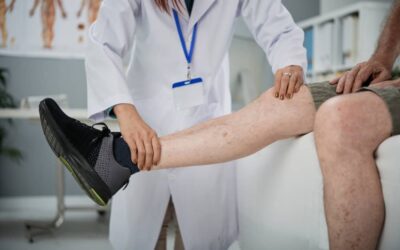Ice. Ibuprofen. Repeat.
That seems to be the recipe for treating a lot of sports injuries. But which injuries need the guidance of a podiatrist to help them heal correctly? Here are five common sports injuries you might want to run by a podiatrist before trying to DIY your recovery.
1. Plantar Fasciitis
- What is it? The band of tissue that runs from your heel to your toes on the bottom of your foot is called the plantar fascia. If it becomes inflamed, you have plantar fasciitis, which usually manifests itself as pain in your heel.
- How is it caused? Plantar fasciitis is typically caused by repetitive motion, such as running or wearing shoes with poor arch support.
- How is it diagnosed? Plantar fasciitis is diagnosed by a physical exam and possibly an MRI or x-ray.
- How is it treated? Bracing, wearing compression bandages, taping the arch, splinting, cortisone shots, special exercises, and Extracorporeal Shockwave Therapy (ESWT) are all forms of non-surgical plantar fasciitis treatment. In more severe cases where non-surgical approaches do not heal your plantar fasciitis, your podiatrist may suggest an Endoscopic Plantar Fasciotomy (surgery releasing the plantar fascia).
2. Stress Fractures
- What is it? A stress fracture is a hairline crack in a bone. This fracture causes pain and sometimes swelling.
- How is it caused? Rigorous running in any sport can lead to stress fractures in the legs or feet.
- How is it diagnosed? An x-ray might be necessary to determine if a bone has a stress fracture.
- How is it treated? Stress fractures that are minor should heal on their own, but resting, icing, and wearing a boot can all help relieve the pain and prevent further damage. If a stress fracture does not line up correctly, however, it will need to be reset before it can heal properly.
3. Achilles Tendonitis
- What is it? Achilles tendonitis is the overuse of the Achilles tendon, the tissue that connects the heel to the bottom of the calf muscle. It can cause severe pain in your lower leg.
- How is it caused? Achilles tendonitis often follows a dramatic increase in activity, including suddenly exercising harder for longer. You may hear a pop at the time of the injury.
- How is it diagnosed? A skilled podiatrist will be able to diagnose Achilles tendonitis by performing a physical exam.
- How is it treated? Physical therapy, ultrasound therapy, shockwave therapy, cortisone injections, orthotics, bandages, and heel cups are all non-surgical ways to heal your Achilles tendonitis. If you do not heal through these methods, your doctor may recommend Achilles tendon repair surgery.
4. Heel Spur
- What is it? A heel spur is a calcium deposit on the heel that develops as a result of extra stress on the heel.
- How is it caused? A combination of arches that are too high or too low with running on hard surfaces puts undue pressure on the heel, and calcium protrusions develop.
- How is it diagnosed? X-rays and ultrasounds may need to be performed to diagnose a heel spur.
- How is it treated? Cortisone injections, physical therapy, and custom orthotics may help heel spurs heal. A podiatrist can also perform a minimally invasive surgical procedure to shave down the spur if your doctor deems it necessary.
5. Sprained Ankle
- What is it? When one of the ligaments in the ankle is stretched or torn, the ankle is considered sprained. Standing on a sprained ankle can be difficult, and the owner of the ankle may experience moderate to severe pain.
- How is it caused? Ankles sprain when they are jerked or twisted quickly. Sprained ankles are very common in sports, especially ones with a lot of twisting and jumping.
- How is it diagnosed? An MRI or x-ray can diagnose a sprained ankle.
- How is it treated? Minor sprains can be treated with rest and ice. More intense sprains can be treated by a doctor through ultrasound therapy, wrapping the ankle, or wearing a boot.
You can take some simple steps to avoid injuring your ankles and feet. Taking time to warm up before exercising will help your muscles and ligaments increase the blood flow and loosen. This will prevent tears. Stretching prior to exercise will stimulate the muscles and ligaments in the same way.
Investing in proper footwear that is specific to the sport you will be performing will also help prevent injuries. A trusted podiatrist can also give you tips specific to your feet and the types of motions you do in your sport that can help you avoid injury.
If you do injure your foot or ankle while playing sports in St. George or Mesquite areas, come visit one of our offices. We would love to get you back to the court, track, or field as soon as possible.



